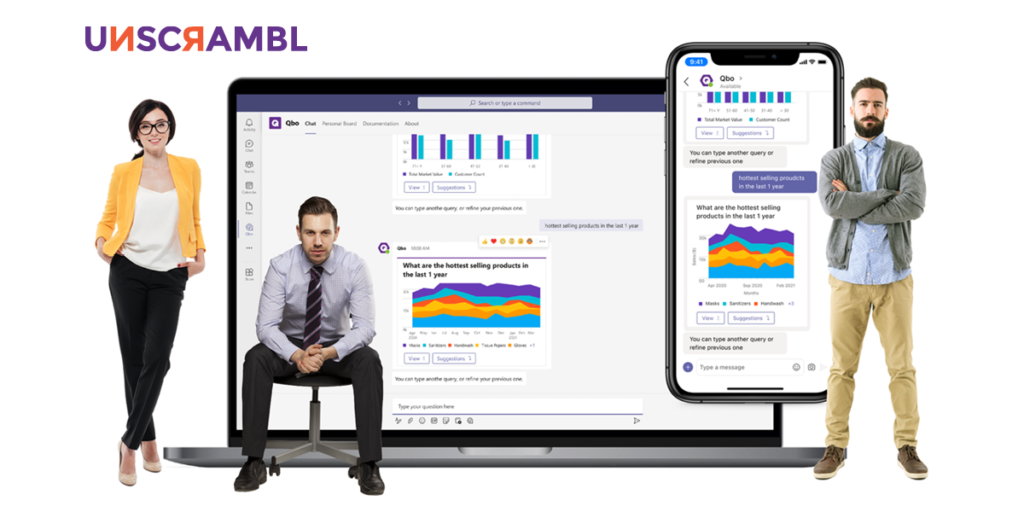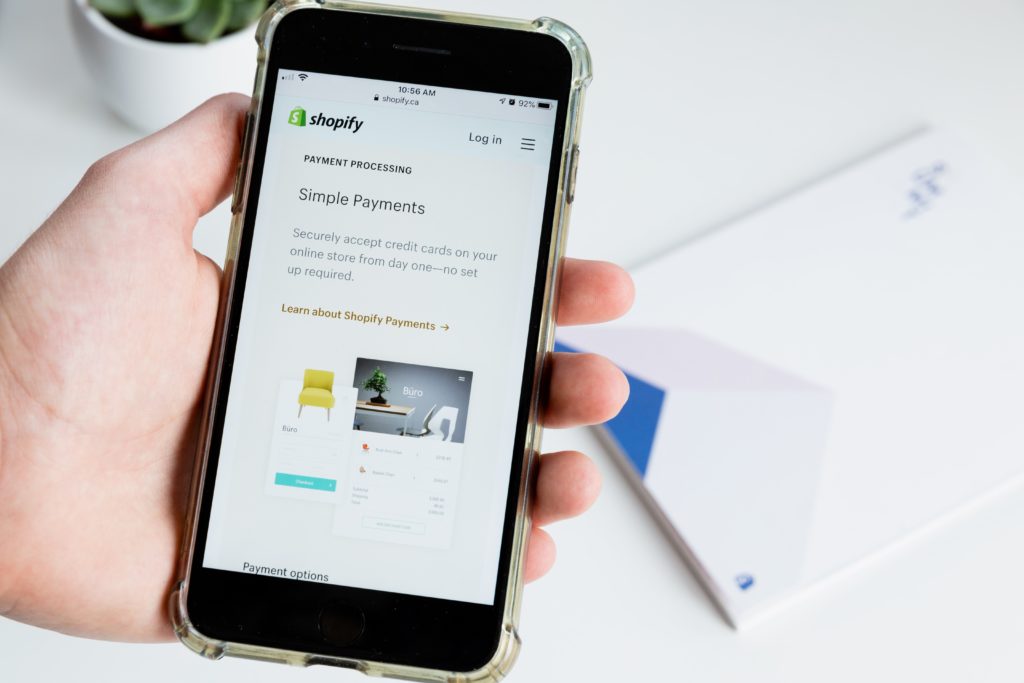 6 Minutes
6 Minutes

Real-Time Business Intelligence (What It Is & Why It Matters)
While companies are embracing the need to analyze their data for better decision-making, business is happening at an accelerated pace with huge amounts of data being generated continuously.
With literally millions of touchpoints and terabytes of data created daily, companies will need a business intelligence solution that can analyze the data in real-time to deliver highly relevant insights which are actionable at this very moment.
In fact, according to IDC, the world’s data will reach 175 zettabytes by 2025 while Ericsson projects that by 2050, there will be 24 billion interconnected devices that will be generating constant streams of data.
Real-time business intelligence and analytics allow companies to stay sharp in their decision-making as well as minimize the risk of utilizing out-dated insights for mission-critical processes.
In this article, we will go going through the importance of real-time business intelligence as well the use cases of real-time BI across key industries.
What Is Real-Time Business Intelligence & Why Is It Important?
Real-time business intelligence is the use of data analytics to analyze data instantaneously to deliver highly accurate and up-to-date actionable insights.
In the traditional analytics set-up, data that is stored in a data warehouse is normally aggregated and then sent to a BI server for analysis and where insights are then processed and derived.
This process adds a significant amount of delay which could render the insights unusable, especially in fast-paced industries where speed is the deciding factor between success or failure.
As we move towards an era of IoT and AI where streams of data are being generated every second by interconnected devices, real-time data analytics has never been more urgent for companies to delight customers better, innovate faster and stay ahead of the competition.
Benefits Of Real-Time Business Intelligence
1. Access To Real-Time Insights To Capture Time-Sensitive Opportunities
While data-driven insights can definitely help chart the long-term strategies of a company and its departments, certain opportunities can only be identified and captured through real-time insights.
With real-time analytics and insights, companies will be able to understand how their marketing ads are performing and make instant decisions on whether to double-down on a strategy, reduce exposure or swiftly create a campaign to capitalize on a holiday event such as a Christmas sale.
2. Optimizes The Way You Harness Insight
One of the biggest challenges of building a data-driven organization is the way insights are being harnessed.
By utilizing real-time insights, companies can enable true data democratization throughout their organization where users will be empowered to make instant decisions that matter when it comes to their queries.
With instant insights come quicker wins, an effective change-management strategy that helps prove to management and employees how valuable data-driven decision making can be.
3. Providing Early Detection For Critical Issues
Real-time business intelligence isn’t just for improving the bottom-line, it is also a powerful defensive tool that helps companies prevent customer dissatisfaction, service downtime or even catastrophic failure.
Take the example of risk detection in the financial industry.
With complicated interconnected models, banks require real-time analytics to transform their risk detection process to swiftly pinpoint issues such as fraud and cyber-risks that might already be underway.

How Real-Time Business Intelligence Is Critical For Businesses Today: 6 Industry Use Cases
According to Gartner, the analytics and business intelligence market grew to US$ 24.8 billion in 2019 with modern BI platforms poised to grow even further.
And at the heart of this is real-time business intelligence that is helping companies across a diverse spectrum of industries to capitalize on opportunities to stay competitive in a fast-moving world.
1. Revolutionizing Retail With Better Customer Experiences
With over 70% of retailers globally ready to adopt the IoT to improve customer experiences and 78% highlighting the importance of integrating e-commerce and in-store experiences, the need for real-time business intelligence has never been stronger.
Real-time business intelligence allows for retailers to not only understand the products being bought in-store but also the products being browsed and ordered online as well.
This swift analysis of data and deriving instantaneous insights will allow decision-makers to optimize key aspects of their retail business such as:
- Accelerating supply chain operations to satisfy the demand for a popular product
- Dynamically reducing prices to move inventory
- Better customize the in-store customer experience based on the customer’s purchase history
Tesco, for example, utilized real-time data analytics to understand their customer needs, minimize their distribution costs and reduce any food wastage. They discovered that the way products were hung together was not working and wasn’t the ideal way customers would be purchasing their products.
With over 40,000 products at each store, tracking them required a real-time business intelligence solution to gain fresh insights that are immediately actionable.
2. Optimising Logistical Challenges In Real-Time
Whether it is a ride-sharing platform or a traditional freight forwarding company, the world of logistics involves managing variables that constantly change and evolve.
Real-time business intelligence allows companies to dynamically track and gain insight into issues that include:
- Pick-ups and drop-offs
- Loading and unloading times
- Delivery route times
- Supply of vehicles and the demand for transport
All these allow companies to optimize routes, solve dynamic supply and demand challenges and drive up revenue.
Take Uber for example. They utilize real-time data intelligence to enable their teams to make accurate decisions such as surge pricing, calculating the maximum dispatch estimated-time-of-arrival as well as demand forecasting on different regions.
Through the power of real-time business intelligence, Uber improves their customer experience on their app with up-to-date insights that are fresh every single minute as well as reliably predict when customers require a ride to pre-emptively solve supply issues even before they happen.
3. Empowering Manufacturers To Stay Competitive
With razor-thin margins, global competition and supply challenges as a result of the COVID-19 pandemic, manufacturers will require the edge of real-time data-driven decision making.
Through real-time business intelligence, manufacturers will be able to solve a variety of challenges that include:
- Production downtime
- Supply chain delays
- Sudden shifts in customer demand
- Warehouse management
One key example is note is how Core Technology Molding utilized the power of real-time data and analytics to streamline their production to consistently produce medical supplies to help solve supply shortages healthcare providers were facing.
The company saw a slowdown of product demand in their traditional clientele that included the automotive and aerospace industry but saw new orders for medical device components from companies like Merck.
To ensure consistent production, Core Technology Molding utilized real-time monitoring, analytics and automation to accomplish two specific goals:
- Enable their staff to work from home while still retaining peak efficiency by accessing real-time monitoring data and insights while protecting employees.
- Allowed them to adopt a data-driven approach across the product quality, production scheduling and shipping to meet growing demands from customers.
4. Leveraging Insights In Banking To Fuel Customer Rewards
The credit card industry is forecasted to reach $1.82 trillion in annual volume by 2024, and with that comes enormous competition in the payment space.
With real-time business intelligence, financial institutions issuing credit cards will be able to analyze trends and information of cardholders in real-time to gain insight into the spending habits of their customers.
American Express (Amex) is one such company that harnessed the power of real-time analytics to better serve its customers.
By leveraging the transaction data on both the customer and merchant side in real-time, Amex used analytics to build algorithms that help to provide customized offers to attract new customers and retain existing users.
This creation of the Amex card program helped their customers save a combined $100 million within two years of its launch.
5. Helping Optimise Energy Grids For More Efficient Energy Distribution
When it comes to electricity grids that power neighborhoods and cities, ensuring optimal operation at all times is key.
From outages to grid failures and cyberattacks, protecting our power grid is a key priority in the utility industry. Real-time analytics allows utility companies to better understand their distribution grids and how to enhance the quality of service and their pricing to customers.
Optimizing the grid also helps the environment by reducing the carbon footprint as well. It has been noted by the US Department of Energy that a 5% more efficient electric grid will result in a reduction of greenhouse gas emissions equivalent to 53 million cars.
Florida Power and Light used the power of real-time analytics to optimize their grid operations, contributing to operational savings of $30 million.
6. Optimising Patient Diagnosis & Enhancing Patient Care
Another valuable application of real-time business intelligence is in the healthcare industry.
With real-time data analytics, hospitals will be able to enhance patient care across 4 critical areas:
- The bed occupancy rate
- Optimizing the length of stay
- ICU patient monitoring
- Medical diagnosis
For example, hospitals will be able to use real-time data analytics to enhance the use of continuous surveillance technology which involves the continuous generation of patient data.
This allows for accurate predictive analytics to instantaneously identify trends across the data-points in real-time to quickly ascertain if a patient requires immediate assistance.
Additionally, real-time business intelligence will allow enhanced ICU patient monitoring by ground staff such as nurses and doctors.
By utilizing real-time analytics to analyze multiple sources of data, nurses will be able to better identify situations where monitoring will be helpful before immediate action would be necessary.

Unlock The Power Of Real-Time Business Intelligence With Qbo
At Unscrambl, we developed Qbo, a real-time business intelligence tool allowing businesses to gain instantaneous insight into their data.
Powered by conversational analytics, users will be able to simply ask questions to their data, as they would in a normal conversation, allowing organizations to easily foster a data-driven culture.
Embark on a free 14-day trial today and see how real-time analytics can help transform your business operations, open up new revenue opportunities and maximize your bottom-line.


